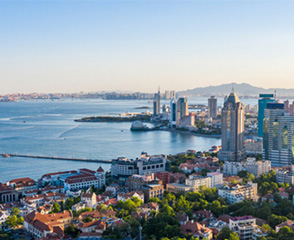India REACH Regulatory Service (CMSR)
Legal overview
On August 24, 2020, India released the fifth draft of the Chemicals (Management and Safety) Regulations, known in English as Chemical (Management and Safety) Rules (CMSR).
CMSR regulates substances produced, imported or placed on the market in India, substances in mixtures, substances in articles and intermediates. The legal basis for this regulation is the Environmental Protection Act (1986). The issuance of the CMSR will result in the suspension of two existing rules: the Hazardous Chemicals Manufacturing, Storage and Import Rules (1989) and the Chemical Incidents (Emergency Planning, Preparedness and Response) Rules (1996).
CMSR will come into effect in mid-2023. Indian manufacturers, importers and authorized representatives (AR, representing overseas manufacturers) can deal with CMSR.
Declaration body and content
1. Subject of declaration:
● Importers in India
● Manufacturers in India
* Foreign producers &mdash — Need to appoint natural or legal person in India as agent
2, Scope of application:
The Rules apply to all substances, substances in mixtures and intermediates produced, imported, stored or intended to be stored in India. Except for the following exemptions:
Radioactive substances, substances under special Customs control, or substances not located in India, substances stored in Customs bonded areas only for re-export, wastes as defined in the Hazardous Waste Management Regulations 2016, substances used for national defence, human food or animal feed, including human or animal nutrition...
3, > 1 ton/year Chemical Substances Notification:
All substances with a tonnage exceeding 1 ton/year are subject to notification. Materials to be submitted for notification: chemical substance information, spectral data, hazard classification, use details, downstream user details, tonnage, storage capacity and SDS. Upon completion of the Chemical Regulatory Division's assessment of the information integrity of the notified substance, a notification certificate and notification number will be issued. All Notifiable substances are required to submit annual reports on 29 February (leap year)/ 1 March each year, any changes in tonnage or other notifiable information are required to be updated promptly, and all new substances must be notified at least 60 days prior to their entry into India (new substances are defined in the definitions section below).
4, > 1 ton/year Priority Substance Registration:
Confirmed in CMSR Schedule II “ Priority substances to be registered ” Registration is required only for substances with tonnage of more than 1 ton/year listed in Currently, 750 substances are included in Schedule II, and the list is constantly updated. Registration shall be completed within 18 months after the substance is placed in Schedule II.
A technical dossier is required for registration, and if the substance tonnage is greater than 10 tons/year, a Chemical Safety Assessment report is required to be submitted together with the technical dossier. The official administrative cost of registration depends on the registered tonnage and the size of the business. Joint submission is recommended for registration.
Registration of intermediates with a tonnage of less than 1000 tons/year requires only the physical and chemical properties of the substance, while registration of intermediates with a tonnage of more than 1000 tons/year requires a technical dossier with complete information and a chemical safety assessment report (CSR). Items containing priority substances, such as tonnage exceeding 1 ton/year, also need to be registered.
5. Annual Report:
Annual reports are required for all notified and registered substances. The annual report needs to include the number of imports into India in the previous year and changes in notification/registration information. Annual reports must be completed by February 29 (leap year)/ March 1 each year.

The services we provide
- Indian Chemical Notification and Annual Report Service
- India Priority Substance Registration Service
- India Restricted Substances Authorization Application Service
- GHS Service
- Compliance analysis and regulatory training services
Zhongbang is one of the earliest institutions in China to engage in compliance consulting services. It has a senior expert team composed of PhDs, Masters, and Bachelor's degrees, and has established branches in the UK, the United States, South Korea, Beijing, Shanghai, Suzhou, Fuzhou, Shenzhen, and other places, forming a global service network layout.
-
Strong technical strength:
A strong team composed of mid to senior technical personnel with professional backgrounds in chemistry, food nutrition and health, medicine, biology, toxicology, environment, and other fields
-
International service level:
A business elite team with multiple languages including English, Japanese, German, and Chinese, efficiently serving international customers
-
Rich compliance experience:
With years of experience in global product and regulatory research in multiple fields, we are able to provide comprehensive and high-level compliance consulting support to various customers
-
Localized service capabilities:
Having multiple branch offices in the UK, USA, South Korea, Beijing, Shanghai, Suzhou, Fuzhou, Shenzhen, etc., we can provide you with services nearby
Service Hotline :400-115-9001
Zhongbang Consulting (Shandong Zhongbang North Management Consulting Co., Ltd.) focuses on product registration and compliance consulting services. With its professional technology, diverse resources, and global network, we are committed to providing regulatory consulting and environmental regulation response services for pharmaceutical, chemical, consumer goods production enterprises, and large multinational corporations. To solve the environmental, health and safety laws and regulations, product quality standards, and other issues faced by enterprises in production, sales, and global trade processes.
Accumulated Customers
18,000+
Distributed in 35 countries and regions
14year
Industry experience
260+
Senior expert team
15+
Subsidiaries
300+
Collaboration Cases
Brand Cases
The choices and trust of over 18000 customers are the driving force for Zhongbang to continuously improve its services. We are willing to grow together with these excellent enterprises
Service Hotline:400-115-9001






































































 Consultation
Consultation
 400-115-9001
400-115-9001